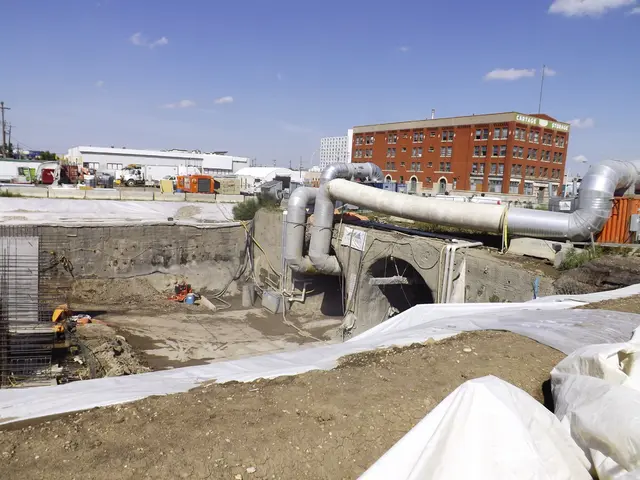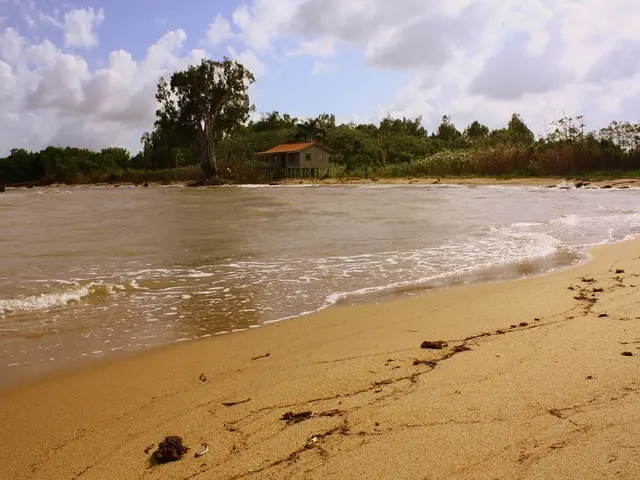When Contemplating a Home Purchase, Give Thought to the Decade
Purchasing a used home means considering several factors, one of which is the year of construction. This information can offer insight into potential issues and expensive renovations.
Gründerzeit Houses (1860s to 1914): Safety with a caveat
Is the captivating building with stucco the right choice? Books written by expert authors like Peter Burk suggest that houses built before World War I can be a solid investment, yet they come with their peculiarities. Beautiful ornaments may have been planned without much focus on building physics, resulting in issues with thermal insulation, sound insulation, and basement sealing.
Modernizing these homes, especially areas like heating, water, wastewater, and electrical installations, is essential to meet current requirements. However, many owners have already brought their houses up-to-date over the years, improving the situation for potential buyers.
Pre-World War II Houses (1914-1939): Simplicity with drawbacks
Homes built after the Gründerzeit were designed with simplicity and the Bauhaus idea in mind, featuring clean lines and narrow walls. While fewer building chemicals were used, the issue of insulation remained the same - basement sealing, thermal insulation, and sound insulation were often neglected. Flat roofs, popular during this period, were often incorrectly executed, in the opinion of experts.
Post-WWII Houses (1940s to 1950s): Precautions needed
Houses built immediately after the war may present some unpleasant surprises. Materials from construction debris were often used, leading to potential issues like contaminated sands or fire-damaged masonry blocks. The goal during rebuilding focused on providing people with a roof over their heads as quickly as possible, resulting in compromised construction quality.
Houses Built Between 1950 and 1970: More stable, yet challenges remain
According to Peter Burk, these houses are indeed stable in terms of construction. However, thermal and sound insulation were still not prioritized until the late 1970s. Heating systems shifted from coal to oil. Flat roofs made of plastic membranes might leak, and decaying pipes could have allowed water to seep into the masonry over the years. Moreover, asbestos use began in the late 1950s and increased significantly in the 1960s.
Houses from the 1980s: More than just asbestos concerns
Asbestos was not banned until 1993, so these houses may still contain it. Houses from the 1980s to the 1990s also present other challenges, such as mineral wool in roof insulation, formaldehyde-containing components, and dangerous wood preservatives used in wooden cladding on ceilings and walls. The buildings' plumbing is often deteriorated and corroded, adding to renovation costs.
Houses Built After 2000: Energy efficiency and future-proof
Modern houses built in 2000 and beyond are much more energy-efficient, with good insulation standards, efficient heating, a well-thought-out ventilation concept, and modern plumbing and electrical installations. With manageable measures like installing a climate-friendly heating system, a photovoltaic system, and a solar thermal system, these buildings can be made future-proof.
Important documents for buyers
The energy performance certificate, providing information about the energy condition of the house, is crucial. Ideally, buyers should have access to the complete building file, which should include the building permit. In the absence of these documents, visiting the building authority is recommended.
Costly problems to watch out for
The energy condition of a house can be updated with effort, but potential hazards like dilapidated or hazardous building fabric could make a property unworthy of investment. Cracks in the masonry that endanger structural integrity, dry rot, pests – all these issues can lead to a property's downfall. Replacing an outdated heating system, renewing sanitary and electrical installations, and dealing with asbestos removal can be very expensive.
In conclusion, older houses are often attractive due to their charm, location, and established infrastructure. However, these buildings come with quirks that buyers should not overlook. It's best to consult an independent expert before making a purchase to understand the measures required and the financial implications.
- The captivating Gründerzeit houses, with their beautiful ornaments, may pose issues with thermal insulation, sound insulation, and basement sealing due to a lack of focus on building physics, making modernization essential.
- Pre-World War II houses, designed with simplicity and the Bauhaus idea in mind, might have neglected insulation issues like basement sealing, thermal insulation, and sound insulation, while flat roofs could also be problematic.
- Houses built immediately after World War II may contain potential issues like contaminated sands or fire-damaged masonry blocks due to the use of materials from construction debris.
- Houses from the 1980s and 1990s may still contain asbestos, and other challenges like mineral wool in roof insulation, formaldehyde-containing components, and dangerous wood preservatives used in wooden cladding.
- When investigating older houses, it's crucial to be aware of costly problems like dilapidated or hazardous building fabric, cracks in the masonry that endanger structural integrity, dry rot, pests, and the need for expensive renovations like asbestos removal, replacing an outdated heating system, and renewing sanitary and electrical installations.







